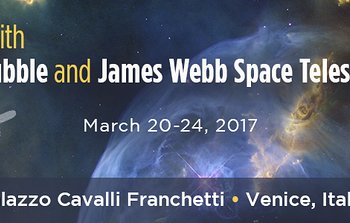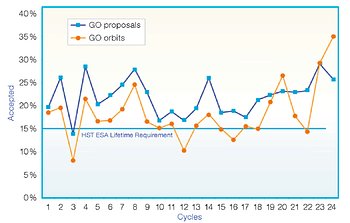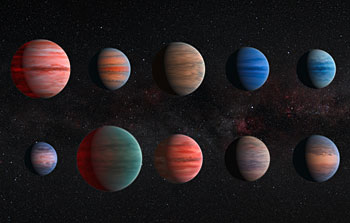Editorial
Summer 2016 has disappeared in a heartbeat. It seems only yesterday that we were welcoming the Hubble Time Allocation Committee to STScI in Baltimore. In June we met to evaluate the thousand plus proposals submitted in Cycle 24. This is always an exciting time! European astronomers did extremely well in this round, securing 36% of the orbits allocated: a record success! You can find additional details on this year’s time allocation here. The new cycle also saw the introduction of a new category of very large Treasury Programs, requesting at least 350 orbits. Those proposals were reviewed by the TAC and we are pleased to congratulate, among others, Dr. David Sing, from the University of Exeter, UK, on being awarded 498 Hubble orbits to carry out “The Panchromatic Comparative Exoplanetary Treasury Program”. You can find here a short article about this ambitious program that will create a unique Hubble dataset.
Although the next opportunity to apply for Hubble time will only be in 2017, please note that Mid-Cycle proposals are accepted any time before 31 January 2017. Up to 200 orbits per cycle are available for Mid-Cycle programs, to provide the community with an opportunity to propose in-cycle observations of recently discovered, non-transient objects.
The primary criterion for such a program is urgency: you must provide a clear description of the scientific urgency of these observations and why they should be executed in the present cycle. For additional information on the Mid-Cycle proposals see here.
Finally, we are very excited by the scientific programme of the conference ‘”Science with the Hubble and James Webb Space Telescopes. V” that will be held at the Istituto Veneto di Scienze Lettere ed Arti, in Venice, from 20 to 24 March 2017. This conference will be primarily devoted to the synergy between Hubble and JWST. With Hubble expected to be a viable observatory beyond 2022, the two observatories will see an overlap of several years. Our plan is to engage you all in thinking about and discussing how best to prepare for the amazing opportunity this synergy presents. You can find here and here the latest updates on the conference. Watch this space as updates are posted. We expect registration to open on 15 November. Join us for this great event!
Contacts
Antonella Nota
ESA HST Project Scientist, STScI
Email: nota@stsci.edu

|
12 October 2016: The organisation of the upcoming conference “Science with the Hubble and James Webb Space Telescopes V” in Venice is doing very well. A very well distinguished Science Organisation Committee has been assembled and they are working hard to shape the scientific programme. A number of prominent invited speakers have already confirmed their participation and with the abstract submission deadline just ...
|
| Read more |

|
12 October 2016: As it does every year in June, the Time Allocation Committee met. More than a hundred astronomers, representatives of a worldwide community of almost 7000, descended on Baltimore for a science-filled week, discussing, arguing and negotiating the most innovative and creative ideas that have been proposed to define Hubble’s scientific legacy. Antonella Nota, HST Project Scientist at STScI, participated ...
|
| Read more |

|
12 October 2016: David Sing, from the University of Exeter, UK, will lead a wide international and interdisciplinary collaboration in respect of the largest exoplanet Treasury Program on the NASA/ESA Hubble Space Telescope in Cycle 24.
Already 14 years have passed since Hubble made the first detection of an atmosphere surrounding an exoplanet, thereby opening up the field of studying exoplanet atmospheres ...
|
| Read more |